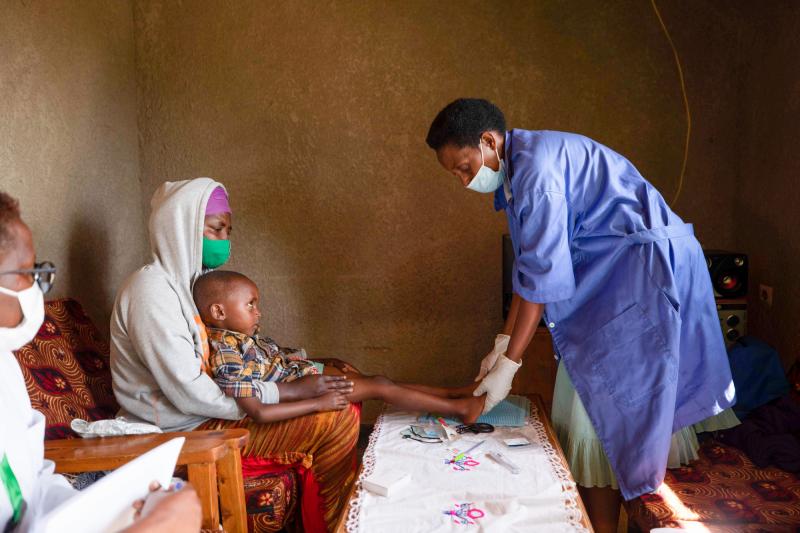Where We Work
See our interactive map



Ruth Uwibohoye, a health worker, cares for a child at Nyanza Hospital in Nyanza District, Rwanda. Ruth is supported by the IntraHealth International-led and USAID-funded Ingobyi project to reduce preventable infant and maternal deaths, reduce the incidence of malaria, and bring high-quality, integrated health services to more Rwandan mothers, children, and adolescents. Photo by Innocent Ishimwe for IntraHealth International.
Here are five fundamental steps toward bringing health workers back to the center of health systems.
In the global health community, we often focus on results and big numbers. How many people have we reached? How many screenings, tests, treatments? At times, we tend to forget that behind every result, every success, are human beings: health workers and the people they care for.
When you’re sick, what you want is a health professional to take care of you, to approach your care as a human being, not as someone who is only interested in your disease.
Adopting a people-centered approach is critical in the context of the evolving burden of disease. Historically, infectious disease required a single interaction between the health system and the patient; with chronic diseases there must be multiple interactions between the client and the health system, over long periods of time. More than ever, the relationship between the client and the health worker ought to be based on mutual trust.
As such, health workers are the backbone of any health system, and they will be at the core of progress in global health. They are the first point of contact for clients, providing care and support when people need it most. Yet, despite their critical role, health workers are too often undervalued, underpaid, and overworked within incredibly difficult conditions.
For stronger health systems and health workforces, donors must move beyond vertical disease funding.
I fully support the Frontline Health Workers Coalition theme of “Invest in Health Workers” for World Health Worker Week. The World Health Organization estimates that there will be a shortage of 10 million health workers by 2030. Urgent action is needed to address this situation. Donors must move beyond vertical disease funding to allocate funding for long-term health systems and health workforce strengthening.
In my view, there are five fundamental steps countries and their partners in the global health community should take to bring health workers back to the center of health systems:
Health workers are the true heroes of the health systems, yet too often they are invisible. Without adequate investment in health workers, no country will be able to achieve universal health coverage by 2030.
In the COVID-19 era, voices are rising from low- and middle-income countries, asking donors to invest in resilient health systems, rather than in vertical funding.
Let’s trust and support countries that invest in strengthening health systems and up-skilling health workers. Because a resilient and agile health system is one that can adapt to the evolving needs of chronic diseases and future pandemics, and one that can save lives. By investing in health workers, we can help ensure that everyone has access to the care and services they need, regardless of where they live.
This post was originally published on the Frontline Health Workers Coalition blog.
Get the latest updates from the blog and eNews




